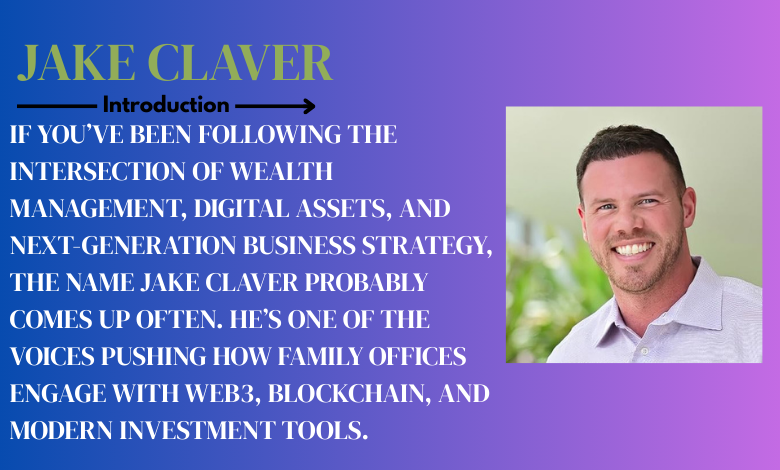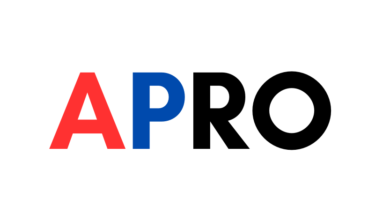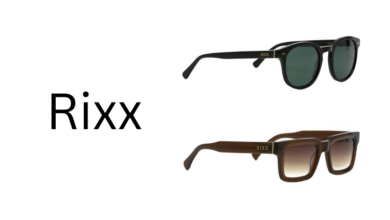Jake Claver: Biography, Strategy, and Learning from a Modern Family Office & Digital-Assets Expert

If you’ve been following the intersection of wealth management, digital assets, and next-generation business strategy, the name Jake Claver probably comes up often. He’s one of the voices pushing how family offices engage with Web3, blockchain, and modern investment tools. He speaks about long-term wealth, risk, structure, and how to shift from “just protecting money” to building something that can last across generations.
In this article I’ll walk you through who Jake Claver is, what he does, how he thinks, and – importantly – what you can learn from his approach. Whether you are new to investing, curious about digital assets, or looking to improve financial structure in your own life or business, there should be takeaways for you. I’ll also give my thoughts and opinions where relevant, drawn from observing what seems to make sense in practice today.
Early Life & Education
Jake Claver is based in Dallas, Texas. He grew up in the region (the Dallas-Fort Worth area). He attended public schools.
In terms of formal education, he earned a degree in Finance from the University of North Texas. He has also completed certifications relevant to family office work (Qualified Family Office Professional – QFOP), and gained training around business processes tied to tokenization, Web3, and digital asset tools.
What stands out is that, beyond school, Claver seems to have invested time and energy learning emerging technologies, digital assets, blockchain, and how these can intersect with more traditional wealth structures. Many people in finance stay inside what’s familiar; Claver appears to push to understand what’s coming next, and blend the old with the new. That’s important because finance and regulation aren’t static: what works today may change, so adaptability matters.
Career Beginnings
Jake didn’t start in crypto or family offices from day one. Like many people, he built experience in sales, investments, consulting. Over time he gravitated to advising wealthy families, high net worth individuals, and structuring platforms to support their wealth in both traditional and digital spaces.
One of his early roles was with Digital Ascension Group. That’s his main organization now. Through it, he provides services to elite clients – multi-family offices, ultra-high net worth individuals (UHNWIs) – helping them adopt digital assets, structure wealth, manage risk, and plan for long-term outcomes.
He also founded or leads associated ventures: Digital Wealth Partners (a wealth advisory focused on digital assets) and Syndicately, which is an SPV (Special Purpose Vehicle) investment platform. Those are technical terms, but we’ll unpack them below.
Business Ventures and Affiliations
Here are the main entities Jake Claver is involved with, what they do, and why they matter:
| Venture | What it is | Why it’s important |
|---|---|---|
| Digital Ascension Group (DAG) | A family office / multi-family office that helps high net worth clients manage wealth, especially with digital assets, over long timeframes. | It is where Claver’s core work lives. It’s blending traditional financial services with newer tools. It also sets the tone for his philosophy: structure, legacy, innovation. |
| Digital Wealth Partners | Wealth advisory service focused on digital asset investing. | Helps clients who want exposure to Web3, tokens, but need guidance on how to do so safely, legally, and sustainably. |
| Syndicately | SPV investment platform / special purpose vehicle that streamlines private market deals, tokenization, and structuring investments. | This is critical because many investors want early-stage or private deals, but those are often less accessible. SPVs make them more accessible; tokenization adds new functionality. Claver uses this to offer structures that many family offices are asking for today. |
These roles let him work at the junction of wealth, technology, regulation, and architecture of investments. It’s not just about “buy crypto” or “hold real estate”. It’s about how to build systems, structures, accountability, legal safety, and intergenerational legacy.
Read Also: Rick Inatome: From Detroit Dorm Rooms to Transforming Education and Technology
Areas of Expertise
To understand how Claver delivers value, here are the core areas he seems to operate in:
-
Digital Assets & Web3 Integration
He believes that blockchain, tokenization, crypto, Web3 aren’t just buzzwords. They offer tools to reshape how assets are owned, traded, stored, and transferred. For example: digitizing real property, fractional ownership via tokens, using smart contracts to govern deals. This involves knowing the tech, the security issues, the legal/regulatory side. -
Tokenization
Tokenization means converting rights to an asset (could be equity, real estate, art, etc.) into a digital token on a blockchain. That helps with liquidity (easier trading), smaller investments (fractional ownership), and sometimes efficiency. Claver’s work via Syndicately touches this. But it’s not without complexity: legal, custody, regulation, tax all come into play. -
SPVs (Special Purpose Vehicles)
SPVs are entities created for a specific investment or project (often private deals). They help group investors, manage risk exposure, handle taxation, legal agreements in one structure. Claver uses SPVs to make private investments more accessible, well-structured. -
Wealth Structuring & Legacy Planning
His approach pays attention to how to protect wealth across generations: estate planning, trusts, legal entities, tax implications, asset protection, risk mitigation. For high net worth individuals, people who want their wealth to last not just for one generation, but many, this is key. -
Education & Mentorship
He runs or supports educational programs for family offices, digital asset professionals. He speaks, writes, shares ideas. He emphasizes that knowing is not enough—you must train teams, create processes, and stay current.
Investment Philosophy & Strategy
Here I try to pull together what seems to guide Jake Claver’s decisions and advice. I’ll also add what I think of these from my vantage point, especially what seems strong or what one should watch out for.
Long-term vision over short-term gain
Claver seems consistently focused on multi-decade horizons. He often talks about legacy, how structures built now should serve not just you but future generations. That requires thinking beyond quick profits, more about compounding, risk, legal/regulatory tail risk, and durability.
Emphasis on safety, structure, legal/regulatory compliance
One trend with many in digital assets is moving fast, taking big risks, sometimes skirting or being ignorant of regulatory / tax / legal issues. Claver appears to build his model on compliance, legal structure, proper entities, custody, protecting against loss. That makes the model more sustainable and less likely to blow up.
Blending traditional finance with innovation
Rather than rejecting traditional tools, he uses them. For example, SPVs, trusts, custody, tax planning are old, proven tools. He layers newer tools (tokenization, Web3, digital assets) on top, but only where they make sense. This is smart, because in many cases the old tools are still essential foundations.
Risk management & diversification
Although he takes digital assets seriously, he doesn’t treat them as a single bet. Risk is managed via structure, legal entities, custody, possibly insurance, and by not overconcentrating in only volatile instruments. For example, a family office might allocate only a portion to high-risk asset classes.
Focus on education, systems, team building
Claver’s business isn’t just solo decision making. He builds teams, he trains, he has systems. One lesson I see is: even if you have a good idea / strategy, you need processes, people, and continual learning to sustain it.
Public Engagement & Thought Leadership
Having credibility, visibility, and community trust is a big part of what makes someone like Claver more influential. Here’s how he does it, and why it matters.
-
Speaking engagements & conferences
He participates in Web3, blockchain, digital asset summits. These platforms allow him to share what’s working, what risks are ahead, network with peers, and stay on top of trends. For followers, seeing someone speak is often more revealing than just reading a profile. -
Media appearances & content
Articles, interviews, podcasts: these help spread his views. They also allow critics, analysts, to ask questions. That tends to raise his accountability. For someone in this space, that builds trust: people don’t just say “look how great I am”, they show they’re engaged in issues, that they can respond to questions, that they’re transparent to some degree. -
Educational programs
The fact that he builds educational content / training shows he wants to lift others up, not just profit from them. This also shapes expertise: teaching forces you to clarify your thoughts, stay current, and answer harder questions.
Lessons for Beginners & Investors
Now here’s where I try to drop what you (if you are new or trying to improve) can take away, adapted from what Jake Claver does. These are practical, not just theory.
-
Start learning early, deeply
Don’t wait until you have lots of money. Learn about digital assets, blockchain basics, how trust / legal entities work, tax basics. Even if you don’t use them yet, when opportunity comes you’ll be ready. Claver’s successes lean heavily on his getting familiar early with emerging tech. -
Don’t put all eggs in one basket
Diversify: across asset types (stocks, real estate, digital), across risk levels, across jurisdictions maybe. Use structures that limit exposure to loss. -
Ensure proper legal, tax, and custody setup
It’s not sexy, but the boring stuff (how you hold assets, what entity owns them, how it’s taxed) often decides whether you keep what you earn or lose a lot to mistakes. Claver seems to model this well. If you invest in crypto or early-stage projects, structure matters. -
Use SPVs or pooled structures where appropriate
If you want access to private deals, syndicates, real estate, startups, art, etc., SPVs can help. But they require legal work, good documentation, trusted parties. Learn how these work; don’t just assume exotic platforms are safe. -
Adopt a long-term mindset
Think in years and decades, not weeks or months. Compounding, growth of systems, legacy building—all work over time. Also, long-term mindset helps in surviving volatility. -
Continuous adaptation
The rules change (regulation, tech, market sentiment). Be ready to adapt. That means staying educated, watching legal / regulatory developments, being cautious when something seems “too good to be true”.
Critiques & Challenges
To be fair, there are always trade-offs and challenges. From what I see, here are some of the harder parts of doing what Claver is doing, and what to watch out for.
-
Regulatory Risk
Digital assets are under evolving regulations. What’s legal today in one jurisdiction may face new compliance requirements tomorrow. Tokenization especially can run up against securities law. If you build models depending on favorable regulatory environments, you need contingency. -
Complexity & Cost
Setting up SPVs, ensuring legal compliance, securing custody, hiring quality team, educating stakeholders—all cost time, money, and require expertise. These things can eat up value if not managed carefully. -
Access & Scale
Many of Claver’s clients are high net worth / ultra high net worth. Some of the structures make sense mostly when you have a certain scale (money, team). For smaller investors, fees and minimums might make entry hard. -
Volatility & Technology Risk
Digital assets are volatile. Blockchain protocols may have bugs, security threats. Custody can be breached. Tokenization platforms may have weak enforcement or legal ambiguity. If you’re working with new tools, risk of failure is higher. -
Trust & Transparency Issues
Just because someone offers a platform doesn’t guarantee every part is transparent. Especially in private markets or blockchain, there might be opacity in fees, ownership, or governance. Scrutiny matters.
Future Outlook
Where might Jake Claver’s path lead? What are the trends to watch, both in what he does and what the field looks like:
-
Greater adoption of tokenization and real-world assets on blockchain. More real estate, art, private equity moving in tokenized forms. If regulatory climates improve, this may scale up rapidly.
-
More integration between traditional financial institutions and digital asset platforms. Custody, insurance, compliance will become more standard. That means less risk of “wild west” behavior.
-
Increasing demand for multi-generational wealth planning in the digital age. Families with significant wealth will need ways to bridge legacy (trusts, entities, legal structuring) with innovation (digital asset exposure, new investments).
-
More regulatory clarity. Governments around the world are beginning to define rules for crypto, blockchain, tokenization, SPVs. How favorable or restrictive those rules are will affect how fast models like Claver’s can spread.
-
Possible challenges from macroeconomic headwinds: inflation, market instability, interest rates, global changes. These will affect all assets, digital included. So resilience will matter.
My Reflections & Opinions
Because I try to write like I’m talking to a friend: I think Jake Claver’s approach is one of the more grounded ones I’ve seen among people building in the digital-wealth / family office space. He doesn’t seem overly flashy; he builds systems, thinks long term. That gives him credibility in a field where hype can overwhelm substance.
That said, his model seems best suited for those with serious resources—both financial and human. If you are just starting with small capital, some parts may feel out of reach. But the mindset, the emphasis on structure, on legal risk, on avoiding shortcuts—these are lessons anyone can use.
So if you’re trying to get serious: study people like Claver, but adapt what works for your scale. Don’t try to replicate everything; pick parts that matter (legal structure, risk management, diversified exposure) and build from there.
Practical Examples
To bring things down into more concrete terms, here are a few mini-case scenarios / thought experiments inspired by what Claver would do. These are simplified, but hopefully useful.
-
Example 1: Fractional real estate token
Suppose you own a property worth $1,000,000 and want to allow others to invest fractional shares. Using tokenization, you could set up a legal entity (LLC or trust) that owns the property, then issue tokens representing shares in that entity. Use smart contracts to manage ownership transfers. Ensure legal documents define rights (voting, income, liability). Use a regulated custodian to hold title, perhaps use a registered SPV to pool investors. You get liquidity, small investors can join, you protect yourself with legal / risk structure. -
Example 2: Diversified portfolio with digital and traditional assets
You have, say, $200,000 to invest. Using Claver’s style, you might allocate 40-50% in safer traditional assets (bonds, index funds, real estate), 20-30% in digital assets with good security and legal due diligence, some portion in private deals via SPVs, and maybe reserve some for experimental Web3 projects. Each category gets monitoring, legal oversight, perhaps different entities or custody arrangements. Over time, you adjust based on performance, risk, regulatory changes. -
Example 3: Protecting wealth across generations
If you plan to leave wealth to children or grandchildren, you might set up trusts, wills, or family office entities that can own digital and traditional assets. You ensure proper succession plans, you define how assets are passed, how decisions get made. You also plan for what happens if regulation changes: where are your digital assets held; do you have hardware backups; do you have insurance; is everything in legally recognized structure so heirs can access them.
Conclusion
Jake Claver is one of the figures helping shape how modern wealth is managed. His work combines traditional financial knowledge (legal structures, risk, legacy) with newer tools (digital assets, tokenization, SPVs).
For someone wanting to build wealth that lasts, his model offers strong lessons: start with structure, invest in learning, don’t chase hype blindly, manage risk, think long term, and stay adaptive.
Even if you aren’t at the level of a family office, applying parts of what he does—legal structure, diversified exposure, education, risk control—can move you ahead.
FAQ
Q: What is a family office, and why does it matter?
A family office is an organization (or unit) that manages the wealth, investments, legal, tax, succession, and often lifestyle or philanthropic goals of a wealthy family. It matters because it helps that family protect, grow, and transfer wealth in a structured way, often avoiding costly mistakes or inefficient management.
Q: What is tokenization of assets?
Tokenization is converting ownership or rights over a real-world asset (e.g. real estate, shares, art) into digital tokens on a blockchain. These tokens can represent fractional ownership, allow easier trading, and bring transparency. But they also require legal, custody, and regulatory work to do right.
Q: What is an SPV (Special Purpose Vehicle)?
An SPV is a legal entity created for a specific purpose, often to hold a specific asset or investment. Investors pool into that entity. It separates risk, clarifies liability, simplifies documentation, and often helps with tax or legal structuring.
Q: Is Jake Claver’s approach only for very wealthy people?
His tools and structures are often designed for high net worth individuals or families (because legal, compliance, minimums, cost, scale matter). But you can adapt many of his ideas for smaller scale: diversify, use trusted platforms, maintain legal clarity, avoid overexposure to risk, keep learning.
Q: What should someone new to digital assets do first?
Learn the basics (blockchain, wallets, private keys, custodians). Understand regulations in your country. Start small. Use trusted platforms. Protect assets (secure storage, good passwords, backups). Perhaps invest a small portion in digital assets and slowly expand as you get comfortable.
Final Thoughts
Jake Claver’s journey shows how blending old and new can yield strong outcomes. The past tools—legal structures, trusts, wealth planning—remain essential. The new tools—tokenization, Web3, blockchain—offer possibilities. The intersection is where real potential lies. If you move carefully, stay grounded in legal, risk, and long-term thinking, you can build wealth that not only grows, but lasts.



